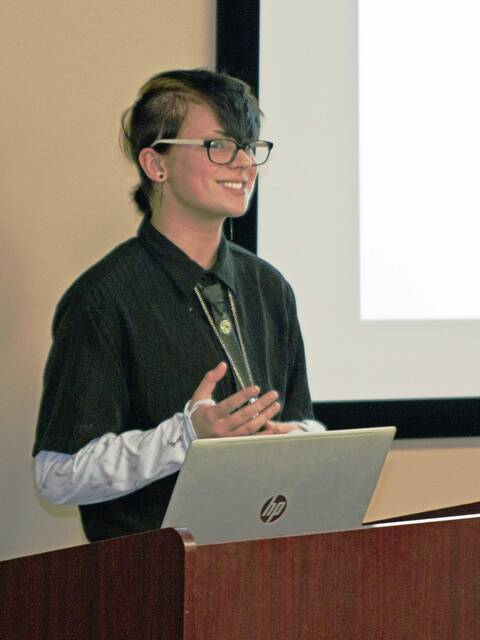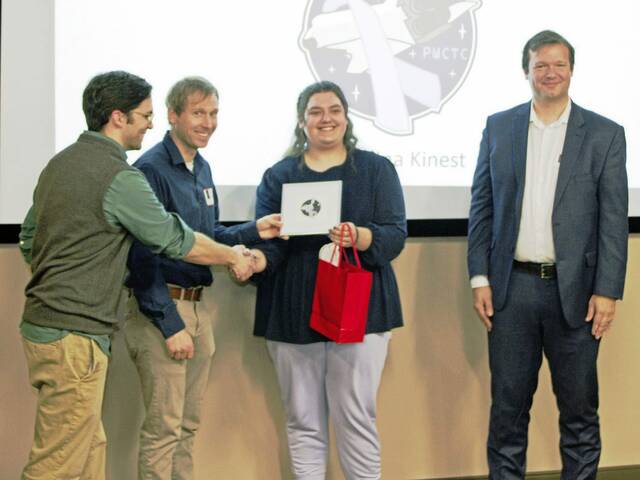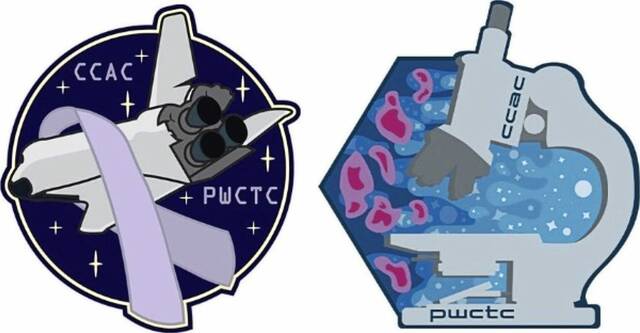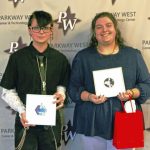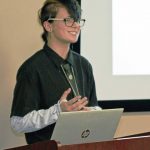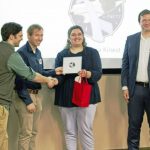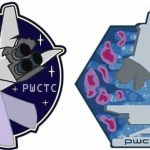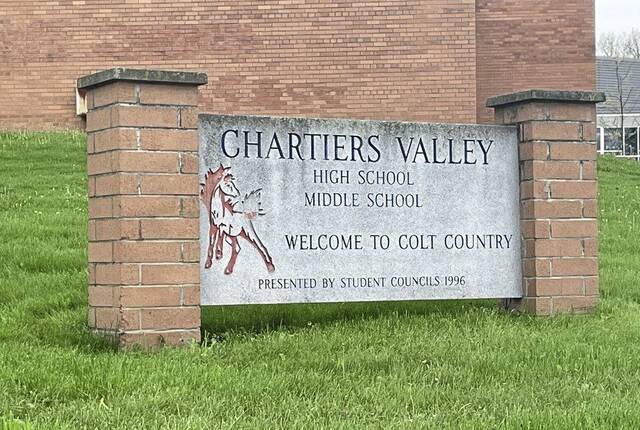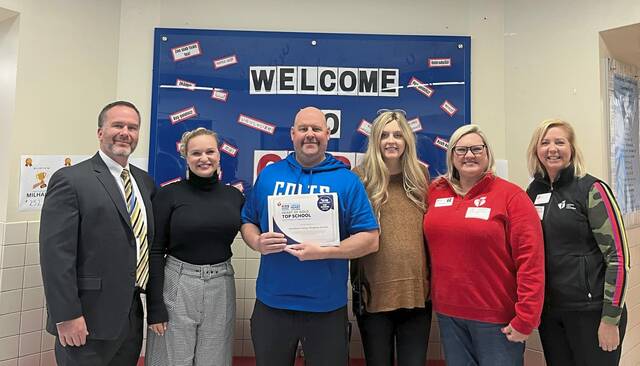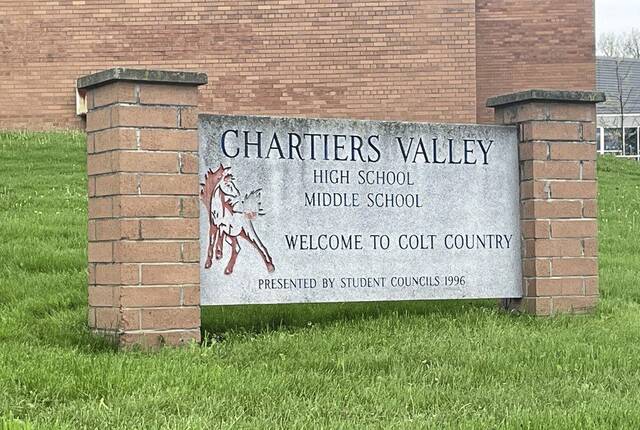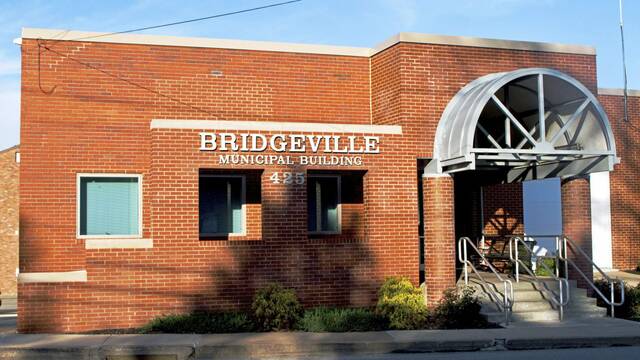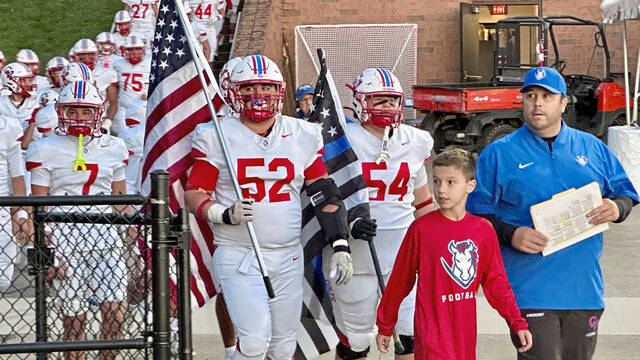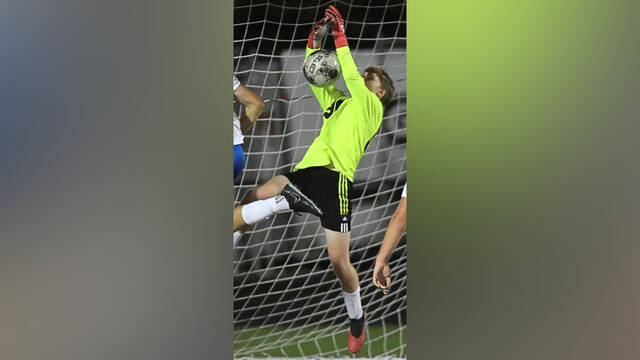The image practically was ubiquitous during the summer of 1969.
An eagle, the national bird of the United States, carries an olive branch symbolizing peace as it touches down on the cratered surface of the moon, with three-quarters of the earth across the blackness of space in the background.
Members of the National Aeronautics and Space Administration’s Apollo 11 mission put plenty of work into designing a patch that would serve as a particularly memorable representation of their accomplishments.
“Every since they started sending things into space, it’s been mandatory that a patch goes along with the mission,” Community College of Allegheny County faculty member Justin Starr said. “The patch is a form of outreach, to tell the rest of the world what NASA is doing.”
In the spirit of the first moon landing and other forays beyond earth’s exosphere, the Student Spaceflight Experiments Program team at CCAC sponsored a contest among regional high school students to design a patch for an upcoming mission.
And both winners came from Parkway West Career and Technology Center, which serves students of Chartiers Valley and 11 other school districts: Angelina Kinest and Joey Clark, juniors in Parkway West’s graphic arts and production technology program.
“Joey and Angelina’s patches are literally going to fly up on a mission to the International Space Station,” Starr said during an April 4 visit to their school, with NASA at this point scheduling the trip for December.
A professor of advanced technologies, Starr is coordinator of the spaceflight program. An experiment suggested by two students on the team has been selected to be part of the space station journey, with branding by the Parkway West-originating logos.
Microgravity’s effects on cancer
The research project by Daniel Roth, a student in CCAC’s respiratory therapy program, and Jason Gomes, in biotechnology, is titled — take a deep breath — “Microgravity’s Effects on the Activation of Dormant Metastatic Cancers.”
“Not a lot is understood here on earth about cancer, so why not send something up into space and try to understand it a little bit better,” Roth said.
“The reason cancer gives people so much trouble and why we can’t cure it is when people get treated for radiation, we may think that it’s gone. But it actually can enter a dormant cycle,” he explained. “A lot of the signals that would cause the cancer cells to reemerge from dormancy, the space environment may have an effect on that.”
Drawing on the theme of the experiment, Kinest came up with the design of a NASA space shuttle flying across a starry sky through a lavender ribbon, which symbolizes support for those living with all types of cancer.
“I actually didn’t have an idea at first. I was kind of just sketching on my paper, like, hey. What’s going to grab attention? What’s going to set me apart from everyone else in this competition?” she said, deciding on the shuttle. “I did research on what they actually look like. I pulled up reference photos to get as realistic as possible.”
In Clark’s design, a microscope frames a sky of stars that merge into the research project’s cell specimens:
“I wanted to push the combination of space and cancer, and see how these things mix by, quite literally, mixing them.”
For the experiment, a test tube containing African clawed frog cells, which reasonably resemble those of humans, will be sent to the space station.
“An exact copy of this is going to be here on earth at CCAC,” biology professor Francis Cartieri, the students’ mentor, said. “When this one in space is brought back, we can compare whatever differences exist, in the kinds of proteins that are being made by the cells that survive the comeback or the way they look, anything like that.”
‘Jobs in the space industry’
The project is relevant to the continuing growth of possibilities for space travel, according to Starr.
“When you think about it,” he said, “if we’re all going to go up into space, wouldn’t you like to know if cancer is going to wake up when you go along for the ride?”
He also discussed CCAC’s role in preparing students for the future.
“Really, what we focus on is getting students jobs. And in the past five years, what’s been happening is our students are getting jobs in the space industry,” Starr said.
“We need technicians. When someone designs a cutting-edge satellite, who’s going to build the satellite? Who’s actually going to make it and put it together, and make the promotional material for it and the brochures?” he asked. “That’s a need that we have right now.”
And that’s why CCAC is participating in the Student Spaceflight Experiments Program.
“When we look into making this jump, into making space something for everyone, you can’t just have the rocket scientists coming up with experimental ideas,” Starr said. “If you’re going to into space and you’re going to do a skilled trade, or you’re going to do something that isn’t literally rocket science, there are questions that need to be answered that you know best.”
Betsy Zelina, Parkway West graphic arts and production technology instructor, thanked CCAC for involving her students in the patch contest.
“Dr. Starr did an initial consultation with them. They were able to ask questions. It was very interactive, and it really helped them to get started on their projects,” she said.
“Each second-, third- and fourth-year student at Parkway was able to present their design to him, and he took that time to let them practice their presentation skills and show their projects that they worked so hard on. So it was a really good experience for our students, and we appreciate being a part of it.”



